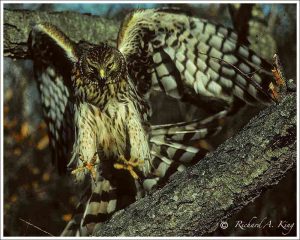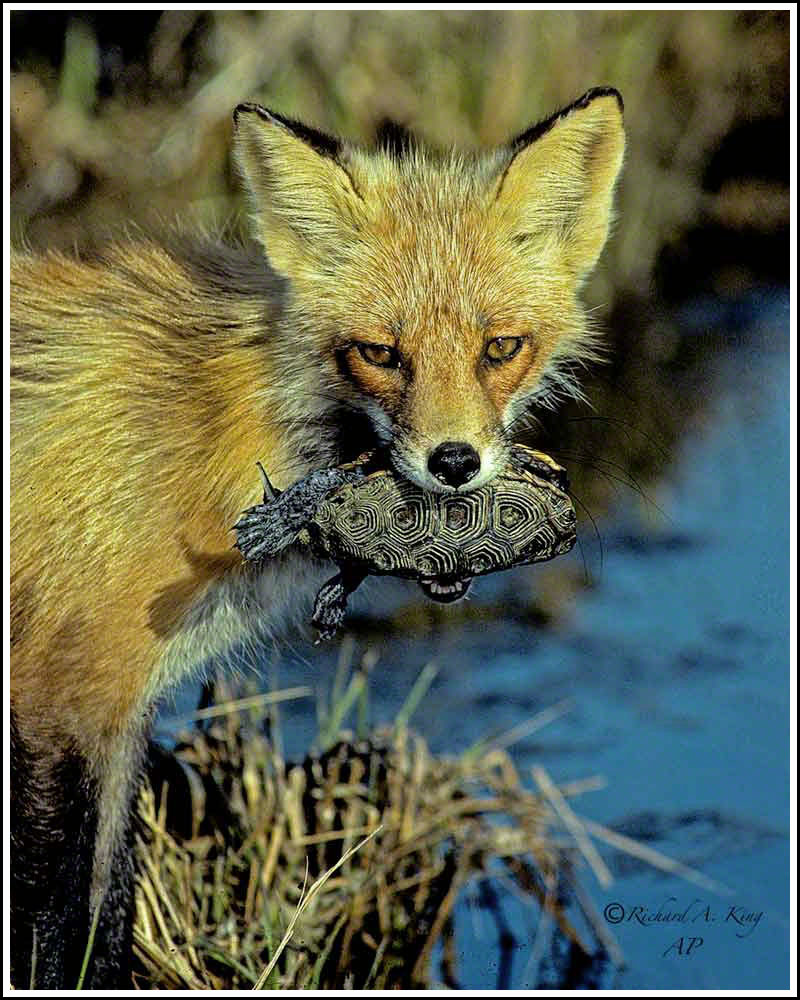This is the first “Barnegat Wildlife Column” written by Richard A. King. To view more of Richard's prolific work visit www.barnegatwildlife.com
Though wildlife photography is pursued in many ways, for many species, what worked best for me for our most elusive species was what I like to call: Observation, Innovation, and Dedication, though not necessarily in that order.
Observation: There is no substitute for intelligence gathering. Getting close ups of our beautiful wading birds with nothing longer than a 300mm lens in a salt marsh environment, with no cover means: You have to be there before they are, and not be seen. Most animals are creatures of habit. See them there one day, and they'll likely be there the next. Find out where they're most active. Check to make sure the light conditions are conducive to good early morning exposures.
Tip: Ninety percent of the diet of wading birds is made up of the killie family, which hug the muddy shorelines, as do the birds that feed on them.
Tip: Birds love to land on stumps or snags. Having one flanking your field of view will artract any number of species from Warblers. and King Fishers to Marsh Hawks and Ospreys.
Innovation: Build a "blind" (or buy one, there are plenty on the market). I like to call it “my little self-induced solitary confinement.” I've made them out of wood, canvas, and even reeds. Because the best shots are taken at or below eye level, it should be no more than four feet high with openings on all sides (so you don't give yourself away getting out). Almost all the images on my site, and more, were taken with variations of this technique over more than twenty years, and all in the Barnegat Bay Estuary http://www.barnegatwildlife.com/
For a 300 mm lens, place it about twenty to twenty-five feet from where you expect your subjects to be. Get a five-gallon bucket to sit on, and a good tripod so you don't spook your subject sticking your camera in and out. If you can leave it there, all the better. If you need permission, get it.

Dedication: Do everything you can to maintain the integrity of the blind. Remember, the important thing here is to hide the human form. The less time you're visible getting in and out, the better. If you're seen, any number of animals will announce your presence. If you do it right, your blind will become an acceptable part of the environment no matter where you move it.
It isn't easy; it takes time; but it works, and you will be rewarded. I believe even more important than the shots you’ll take are the things you'll see, learn, and experience, and where the amazing questions that arise will take you. I know for me it's been one of the most mind-altering experiences of my life. I hope it is for you.
Though you may not see the species you're looking for, you never know what will appear in front of your lens. Be prepared for the unexpected . Learn to take advantage of observation and opportunity. Many of my best shots came from these applications

.





